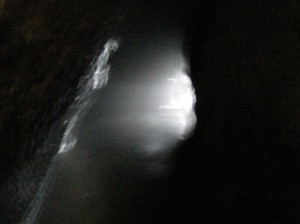We all have a homeland, a place bred into our bones; some know they stand on that ground, some leave it but tell the stories, others wander, forget, and grow empty. Then wanderers beget wanderers who are truly the lost.
The lost have no connection to the land, and seek to fill an emptiness with everything and everything and more…
This PROJECT investigates man’s relationship with and response to the land. My project considers historic precedents [to be determined as a combination of architecture, art, and/or writing], and a literature review as examples of man’s expression of a fluctuating relationship with his environment influenced by an a priori knowledge of beauty, driven by an evolutionary history of familiarity with the land [nature], and broken down by globalization.
My investigation contrasts and compares the precedent study, and the literature review with current examples of a globalized world: we have adapted behaviorally at the cost of our social and physical wellbeing; we have lost touch with what it means to be part of the land, and part of a whole. These issues are far beyond our attempts at sustainability. We must look to anthropology, sociology, evolutionary biology and psychology, and perhaps to the arts to reconstruct our connection to the land, and to repair our ability to connect with one another.
A human being is part of the whole, called by us ‘Universe’, a part limited in time and space. He experiences himself, his thoughts and feelings as something separated from the rest – a kind of optical delusion of his consciousness. This delusion is a kind of prison for us, restricting us to our personal desires and to affection for a few persons nearest to us. Our task must be to free ourselves from this prison by widening our circle of compassion to embrace all living creatures and the whole [of] nature in its beauty.
~Albert Einstein, 1950
This project, in essence, seeks physical design solutions by interpreting ‘answers’ established through current scientific and academic theory, and to express these thoughts poetically as a symbiotic relationship between our built environment and our place in the world.
I intend my research to influence the design of two Department of Conservation Huts [or two groups of huts] constructed as a response to two very different environs found in New Zealand [to be determined]. I assume at this point [dependant on literature review], these designs should demonstrate a deep response to the land as architecture, and begin to investigate the properties of such a response as one ingredient of many necessary in reconnecting humanity physically and socially through the land.

